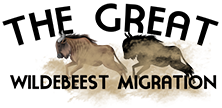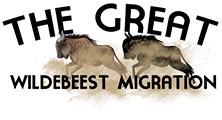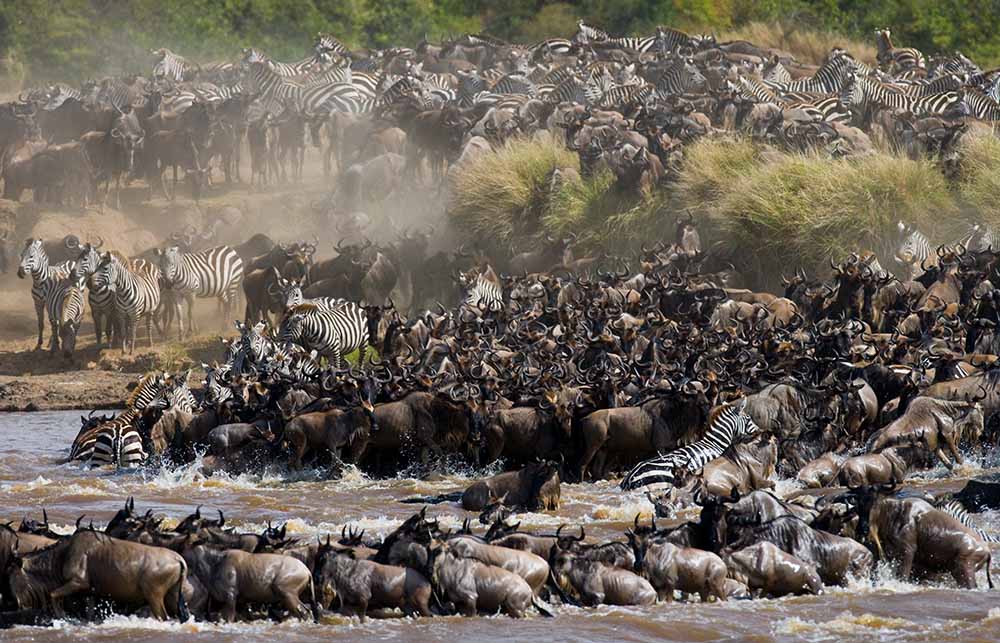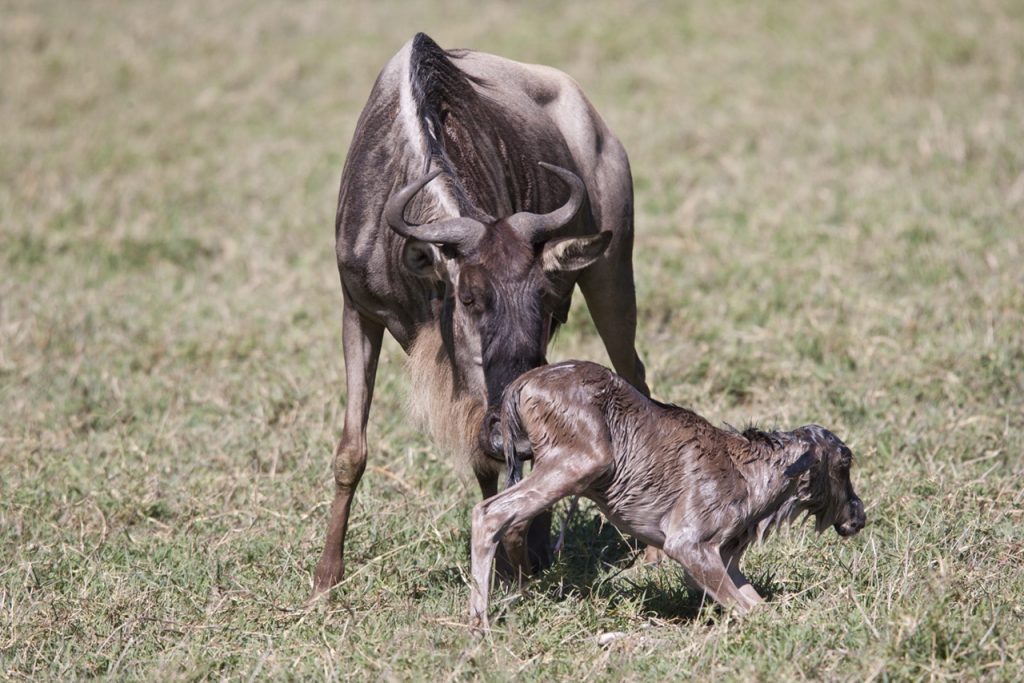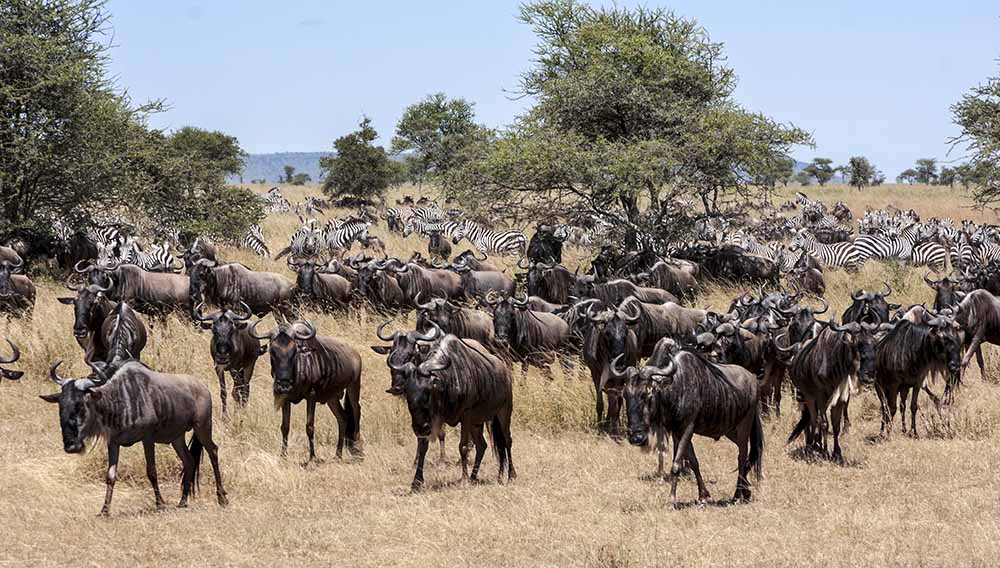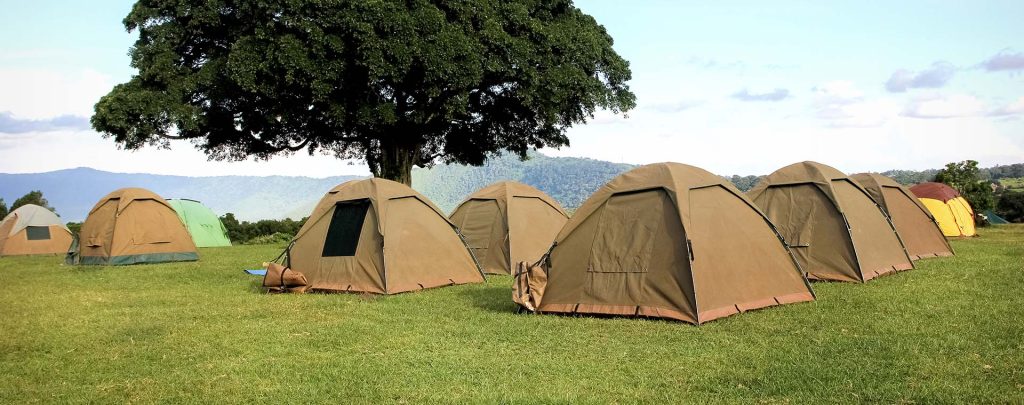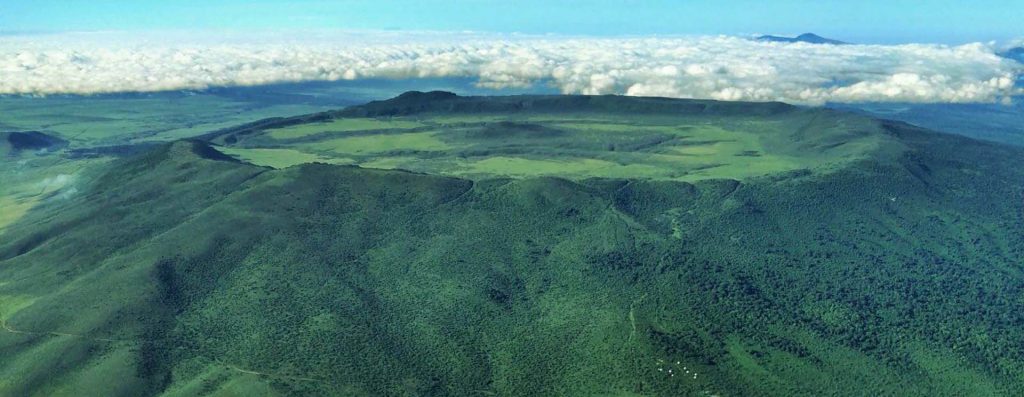Empakaai Crater
Empakaai Crater may not be as famous as Ngorongoro, but many travellers consider it to be its match in beauty. Empakaai is about 8km in diameter, and holds a beautiful; round lake that occupies nearly half its floor. The lake draws flamingos and other water birds and is surrounded by steep-sided, forested cliffs at least 300m high. When flamingos are there, from the rim it looks like pink beaches around the lake.
On the outside, the elevation of Empakaai on the western side is 3,200m above sea level and on the eastern side, 2,590m above sea level. Because of this high altitude Empakaai is almost always shrouded in mist, and the lake appears emerald or deep blue in colour.
Visitors to Empakaai can walk to the rim to catch the appealing scenery or hike down into the crater. From the rim, visitors can view the volcanic cone of Oldonyo Lengai to the northeast, and even the alkaline Lake Natron shimmering in the distance.
A trail descends from the rim to the floor of the crater through the mountain forest hosting birds and monkeys.
The descent to the bottom of the crater takes between 30 and 50 minutes, and might take twice that time to climb back up. Visitors hiking down Empakaai are required to be accompanied by an armed ranger. There are special campsites on the rim of Empaka crater available in booking in advance. Campers at Empakai should bring their own drinking water as well as camping gears.
Rangeland – Ngorongoro
Ngorongoro is home to lush green, rain-watered vegetation, as well as desert plants. The area has uncultivated lowland vegetation, arid and semi-arid plant communities, abundant short grass used for grazing, and highland forests.
Scrub heath, grasslands, high open moorland, and the remains of dense evergreen forests cover the steep slopes of the crater, while highland trees including Peacock Flower, Yellow-Wood, Kousso (Hagenia abyssinica), and Sweet Olive can also be found. There are also extensive stretches of pure bamboo on Oldeani Mountain, and Pencil Cedar on Makarut Mountain to the west. Dove- weeds dominate the lower slopes, while the upland woodlands contain Red Thorn Acacia and Gum Acacia that are critical for protecting the watershed.
The crater basin is covered by open short grass plains with fresh and brackish water lakes, marshes, swamps, and two patches of Acacia woodland. The Lerai Forest is home to the acacia or Yellow Fever tree while Laiyanai Forest has Pillar Wood and Acacia Lahai. The undulating plains to the west are grass-covered with occasional Umbrella Acacia and Commiphora Africana trees. Blackthorn Acacia and Zebra wood dominate in the drier conditions beside Lake Eyasi. These extensive grasslands and bush are rich, relatively untouched by cultivation, and support very large animal populations.
